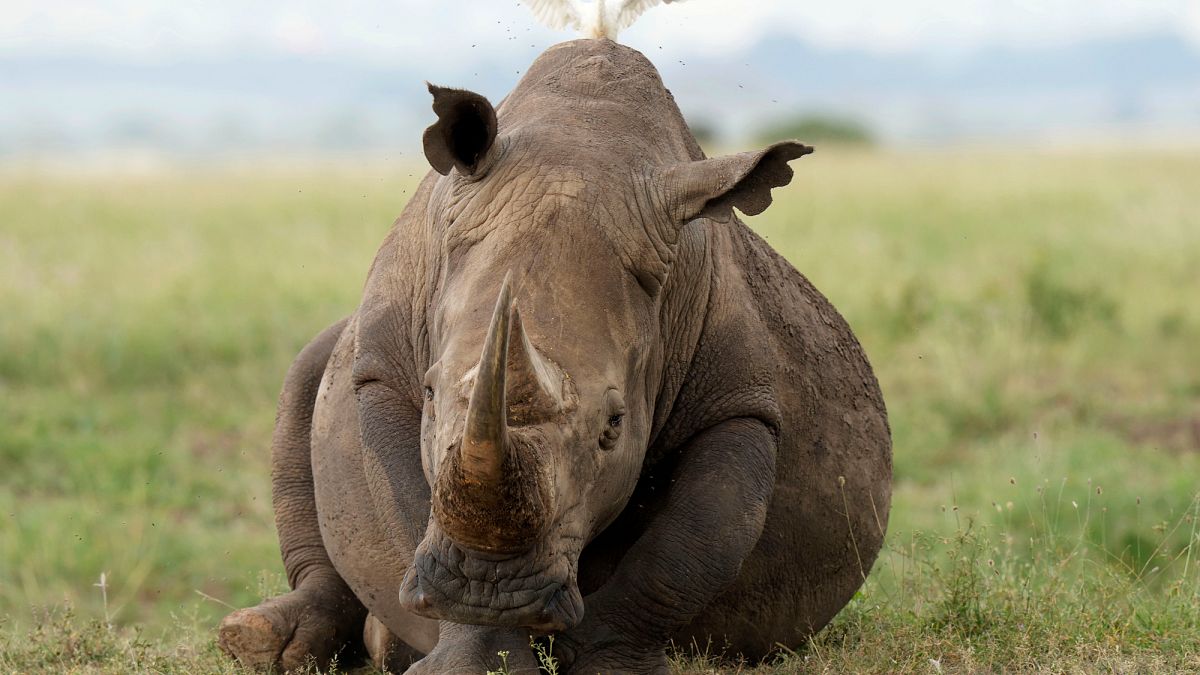By Euronews Green with AP
Published on
08/08/2025 – 10:41 GMT+2
ADVERTISEMENT
The number of critically endangered black rhinos has increased slightly, but there is bad news for other rhino species, according to a global count released Thursday by the International Rhino Foundation.
The latest estimates show that black rhino numbers went up from 6,195 to 6,788. White rhinos had declined, however, from 15,942 to 15,752 since the last count in 2021. Black and white rhinos are only found in the wild in Africa.
The number of greater one-horned rhinos, found in northern India and Nepal, rose slightly from 4,014 to 4,075.
But Javan rhinos have declined from an estimated 76 to just 50, the foundation said, and that was entirely due to poaching. There is only one known population of Javan rhinos left, at a national park on the Indonesian island of Java.
The Sumatran rhino population stands at just 34-47 animals, around the same as previous estimates.
The global population of all rhinos is approximately 26,700.
Rhinos threatened by new trafficking routes
The International Rhino Foundation says it gets its figures from counts by specialist rhino groups at the International Union for the Conservation of Nature, the global authority on endangered species. It does not count rhinos in zoos, only those in the wild or in national parks.
The rhino foundation said there were worrying new trends from South Africa, which has more rhinos than anywhere else in the world. There, the average number of rhinos in individual populations was below what conservationists recommend to maintain a viable population.
It also said a new rhino horn trafficking route was emerging between South Africa and Mongolia, while Qatar was becoming a growing hub for horn trafficking.
Radical radioactive anti-poaching tactics
Rhino poaching is still a major problem in South Africa and elsewhere to feed the illegal market for rhino horn products in parts of Asia. South Africa loses between 400 and 500 rhinos a year to poaching.
It is often looking for new ways to deter poachers. One group of scientists launched a project last week to inject radioactive material into the horns of rhinos.
Last year, about 20 rhinos at a sanctuary were injected with isotopes in trials that paved the way for the project’s launch. The radioactive isotopes, even at low levels, can be recognised by radiation detectors at airports and borders, leading to the arrest of poachers and traffickers.
Researchers at Witwatersrand’s Radiation and Health Physics Unit say that tests conducted in the pilot study confirmed that the radioactive material was not harmful to the rhinos.
“We have demonstrated, beyond scientific doubt, that the process is completely safe for the animal and effective in making the horn detectable through international customs nuclear security systems,” said James Larkin, chief scientific officer at the Rhisotope Project.
“Even a single horn with significantly lower levels of radioactivity than what will be used in practice successfully triggered alarms in radiation detectors,” said Larkin.
The tests also found that horns could be detected inside full 40-foot shipping containers, he said.


